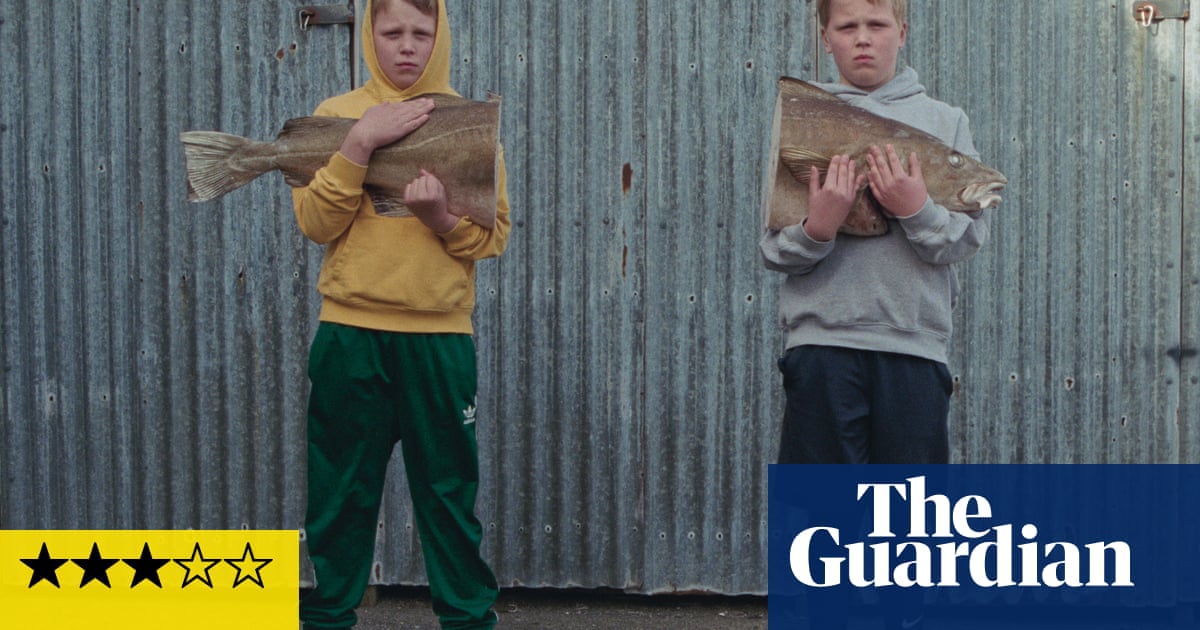Icelandic film-maker Hlynur Pálmason gave usthe haunting historical drama Godlandand thechallenging and bizarre thriller A White, White Day; now he has changed things up with this startling, amusing, vaguely frustrating movie. The Love That Remains is a portrait of a fractured family and a sundered marriage which, with its dreamy piano score, fantasy visions and quirky sequences to go with the dead-serious scenes of purported emotional pain, introduces a slightly disconcerting but certainly intriguing new comic tone.
Pálmason’s visual and compositional sense is as commanding as ever, with some stunning imagery of the Icelandic landscape. But it is flavoured with a new tone of persistent, playful unseriousness, which finally morphs into a tragicomic spectacle of male loneliness. In some places this film doesn’t have the weight and the impact of his earlier work, but it’s certainly engaging.
This is the story of Maggi, or Magnus (Sverrir Gudnason), who works on a fishing trawler. He is now divorced or at least separated from his artist wife Anna (Saga Garðarsdóttir), who creates large canvases and works with metal, and also photographic projects and land art, working often out of doors, on the family’s own land. They have two sons and a daughter, whose granddad is played in cameo by Pálmason’s longtime lead actor Ingvar Sigurdsson; they amuse themselves firing arrows at a humanoid target they have rigged up on a pole – a very dangerous pastime, as it turns out.
Poor Magnus is always showing up, asking to see the the kids, hanging out with the family from whom he is now supposedly estranged; at one stage, they go on a swimming-trip-slash-picnic and Magnus is treated to an ecstatic upskirt vision of Anna as she stands over him. Is it actually happening? Or just in his raddled, lonely, horny imagination? But Anna is obviously very exasperated with Magnus and feels sorry for him, against her better judgment, allowing him to be with her and the children because so clearly he has no idea how to manage his post-separation existence, and it is taking a terrible toll. She is beginning to hate him.
Or is she? Hard emotional realities of this sort are always being softened and modified by quirky visual inventions. Magnus takes it upon himself to kill the wayward rooster that they keep on their land, because Anna had been complaining about its aggressive behaviour; it is a scene that speaks of Magnus’s own thwarted and diminished masculinity. It is followed by a dream sequence in which this rooster, enlarged to monstrous size and inspired by the scary movie on TV to which Magnus had fallen asleep, comes back to take his revenge. It’s quite funny – but perhaps not funny enough to be fully successful as a poignant moment.
There are other dream moments. An obnoxious Swedish art dealer who patronises Anna and her work meets a terrible end. A sword lands Pythonesquely from the sky just next to the children’s sword-target which has a medieval helmet. Meanwhile, near Magnus’s trawler, an old second world war mine has appeared – another flourish of metaphorical danger. The effect is tender, sympathetic, diverting and often very elegant and indirect. But it withholds from us the full, real pain of damaged love.
The Love That Remains screened at theCannes film festival.
